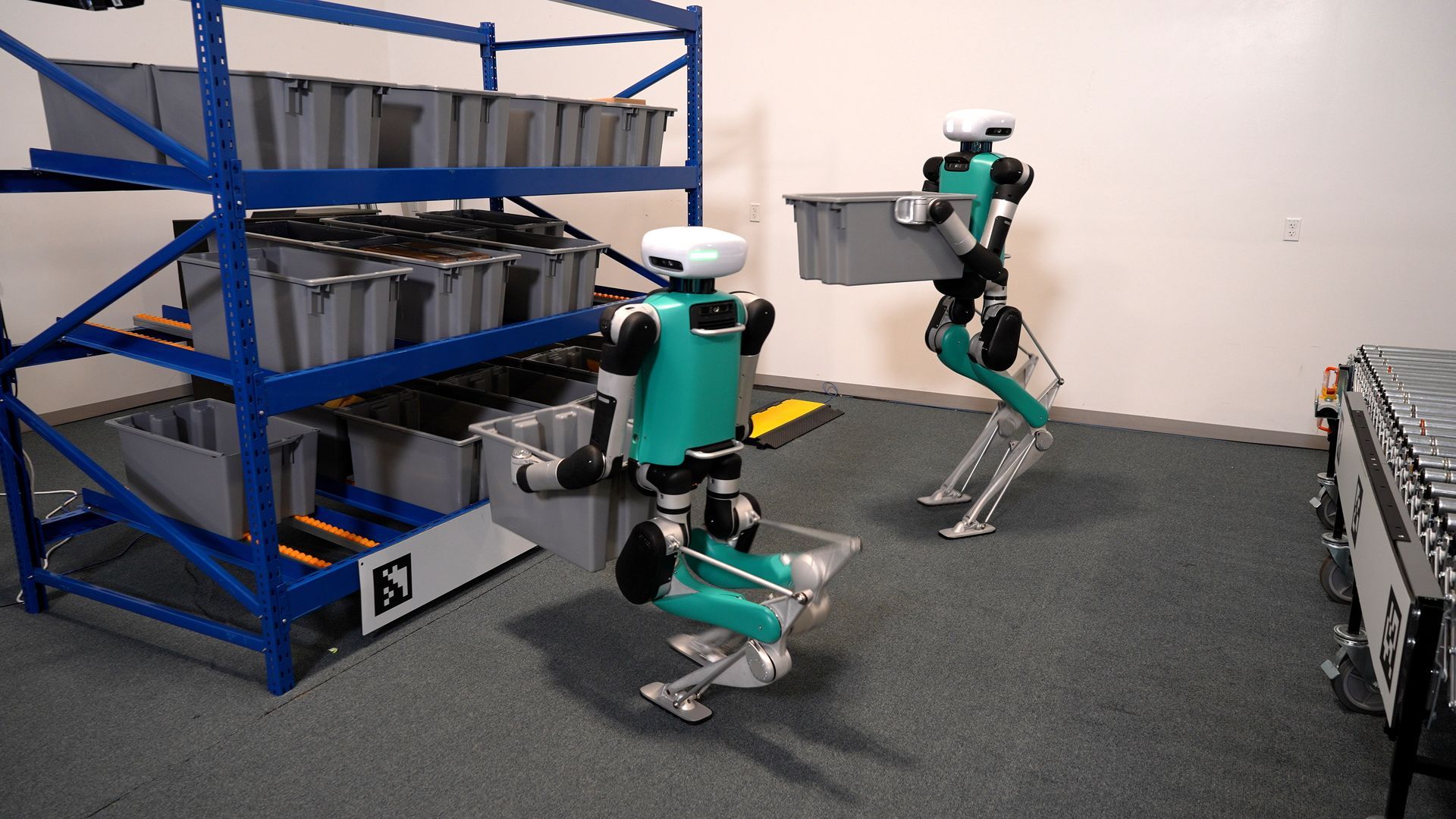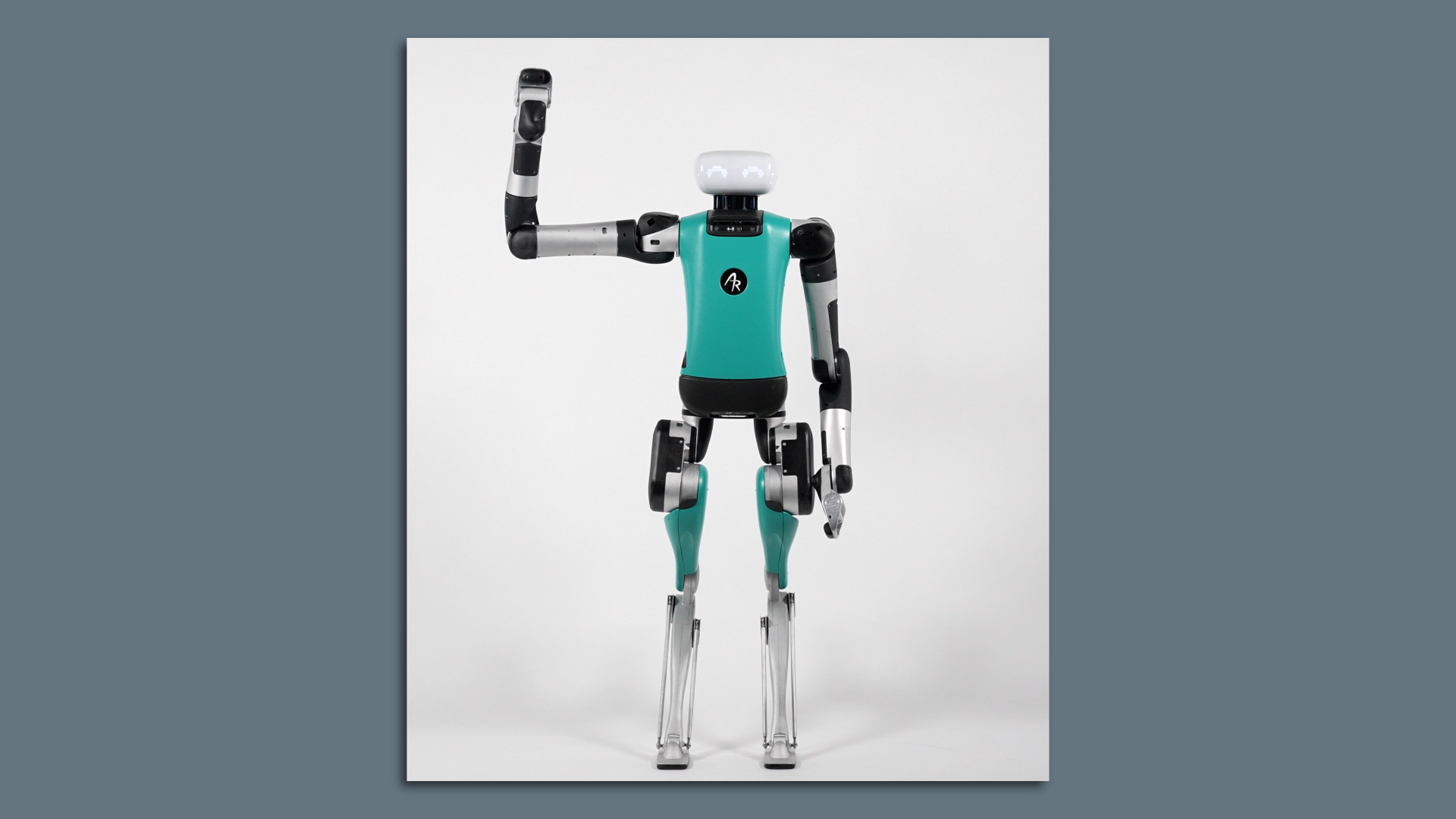The first commercially available human-shaped robots designed for warehouse work were unveiled last week by a company called Agility Robotics, for delivery in 2025.
Details: Digit, which is built to work alongside humans, can lift and move plastic bins in a warehouse or distribution center.
- Fully self-charging, Digit — who is a slim 5'9" and 140 pounds — will walk over to its own charging dock, click itself in, and return to the workplace for another shift after it's juiced up.
- "Everything we do is about building a robot that can work in human spaces and do human workflows," Jonathan Hurst, CTO of Agility Robotics, tells Axios.

The big picture: There's an arms race to develop humanoid robots that can alleviate labor shortages and do jobs that people find too boring, dangerous or repetitive.
- Tesla and a startup called Figure are building humanoid robots for logistics work, while another startup, Sanctuary AI, recently deployed a humanoid robot with dexterous hands (but wheels instead of legs) at a Mark's retail store in Canada.
- But Agility says it's the frontrunner in bringing a product to market.
How it works: Digit is designed to pull plastic bins called "totes" from a warehouse wall and move them wherever they need to go, taking up the same footprint as a human.
- Digit will lift "anything that a person would handle," Damion Shelton, CEO of Agility, tells Axios. "Think about things that are larger than a small box, but smaller than a giant bag of dog food."
- Building robots that can simulate human movements is a huge challenge, but approximating the human body is important: "With other form factors, it is very hard to be multipurpose," Hurst says.
Backstory: Shelton and Hurst met at Carnegie Mellon University's graduate robotics program.
- The first product they introduced under the Agility brand was Cassie, which ZDNet described as "little more than a pair of bipedal robotic legs."
- The first iteration of Digit, introduced in 2020 with Ford Motor Co. as its launch partner, was designed to ride in the back of a Ford autonomous vehicle and deliver packages to homes.
- Its backwards knees allowed its legs to tuck under its body to sit conveniently in a car.
- "Our entire career has been around getting robots to move the way people and animals do," Shelton says.
Zoom in: The new-and-improved Digit, designed for logistics work, has anthropomorphic features meant to guide the humans in its midst.
- The robot's LED eyes indicate the direction in which it's going to turn, and "it can use expression and gesture in order to indicate its intent and what it's about to do," Hurst said.

Of note: Amazon has developed a spate of non-humanoid robots for logistics and delivery work — and has invested in Agility.
- Chains like BJ's are using AI-driven robots for inventory tracking.
What's next: Digit's evolution will be determined by a partnership program that'll give potential customers "an exclusive opportunity to shape the development of Digit’s skills and abilities," Agility said in a press release.







